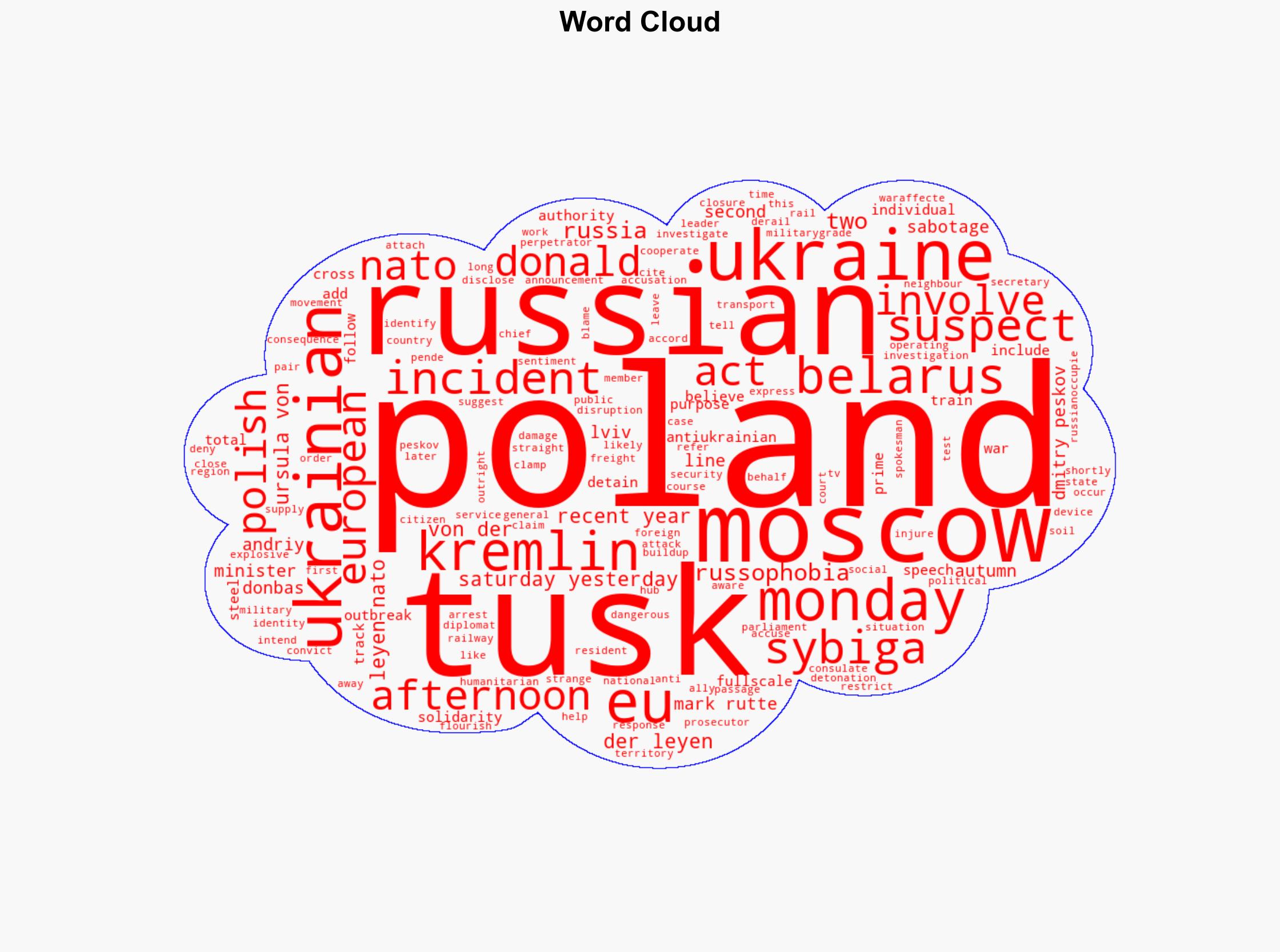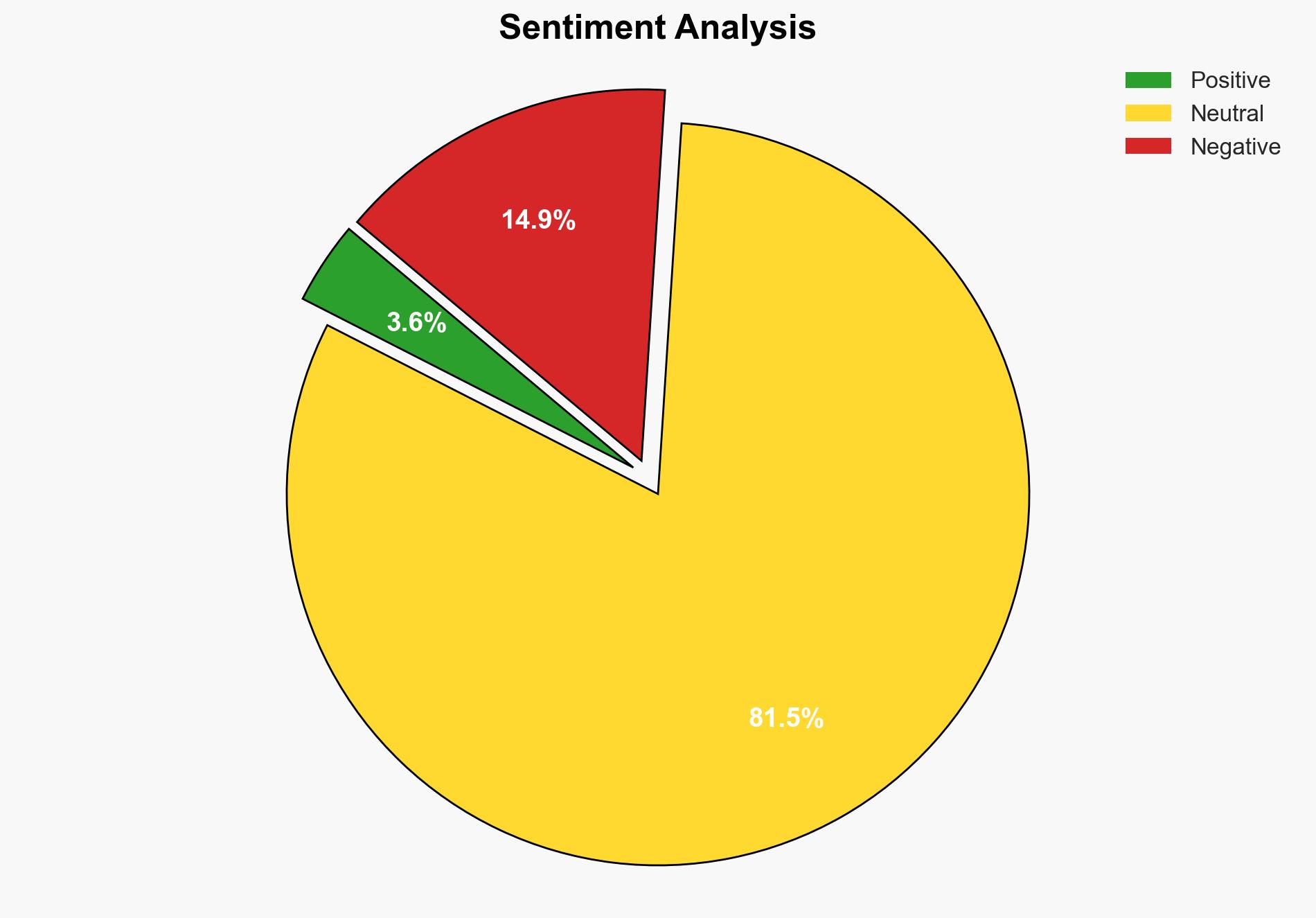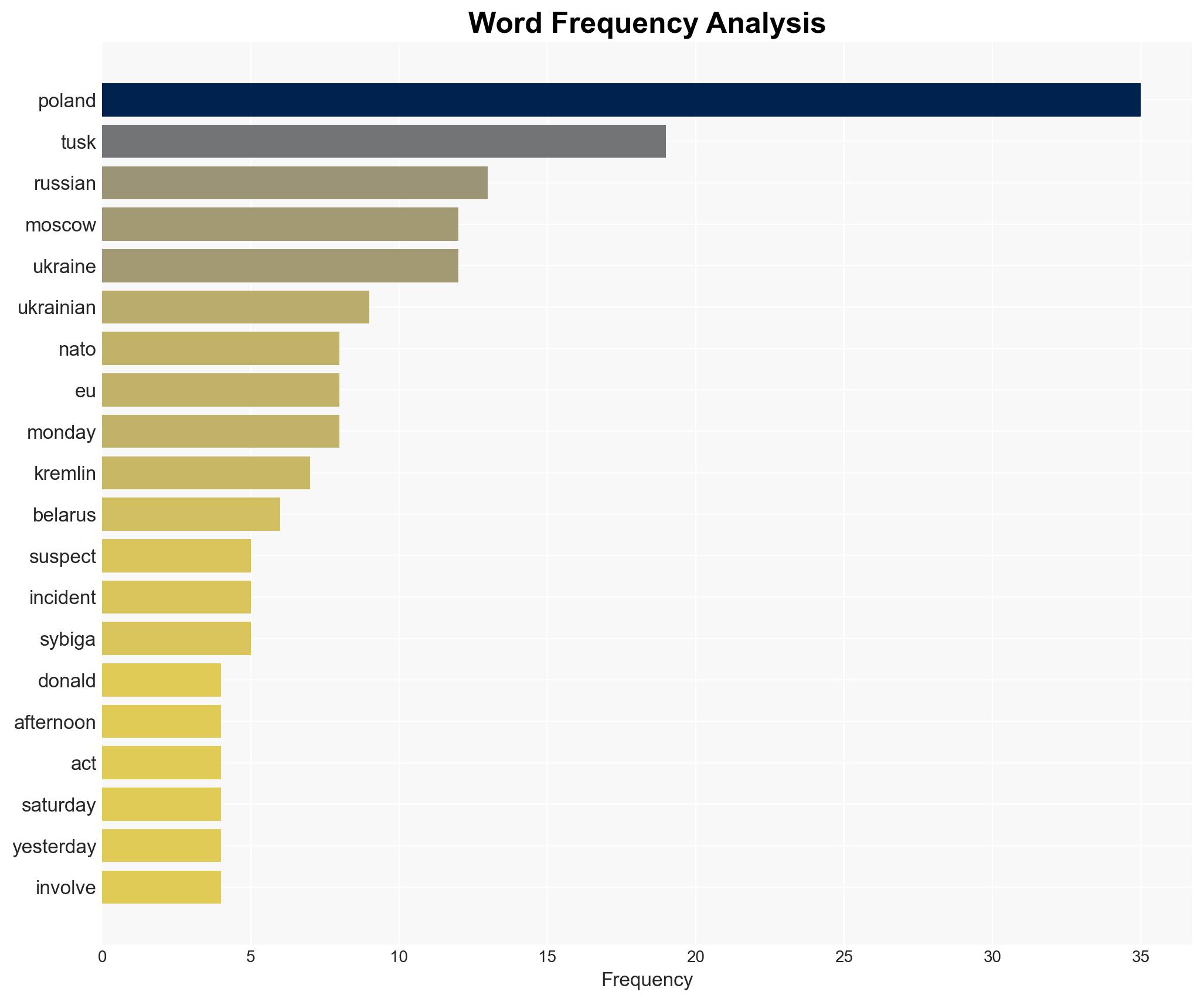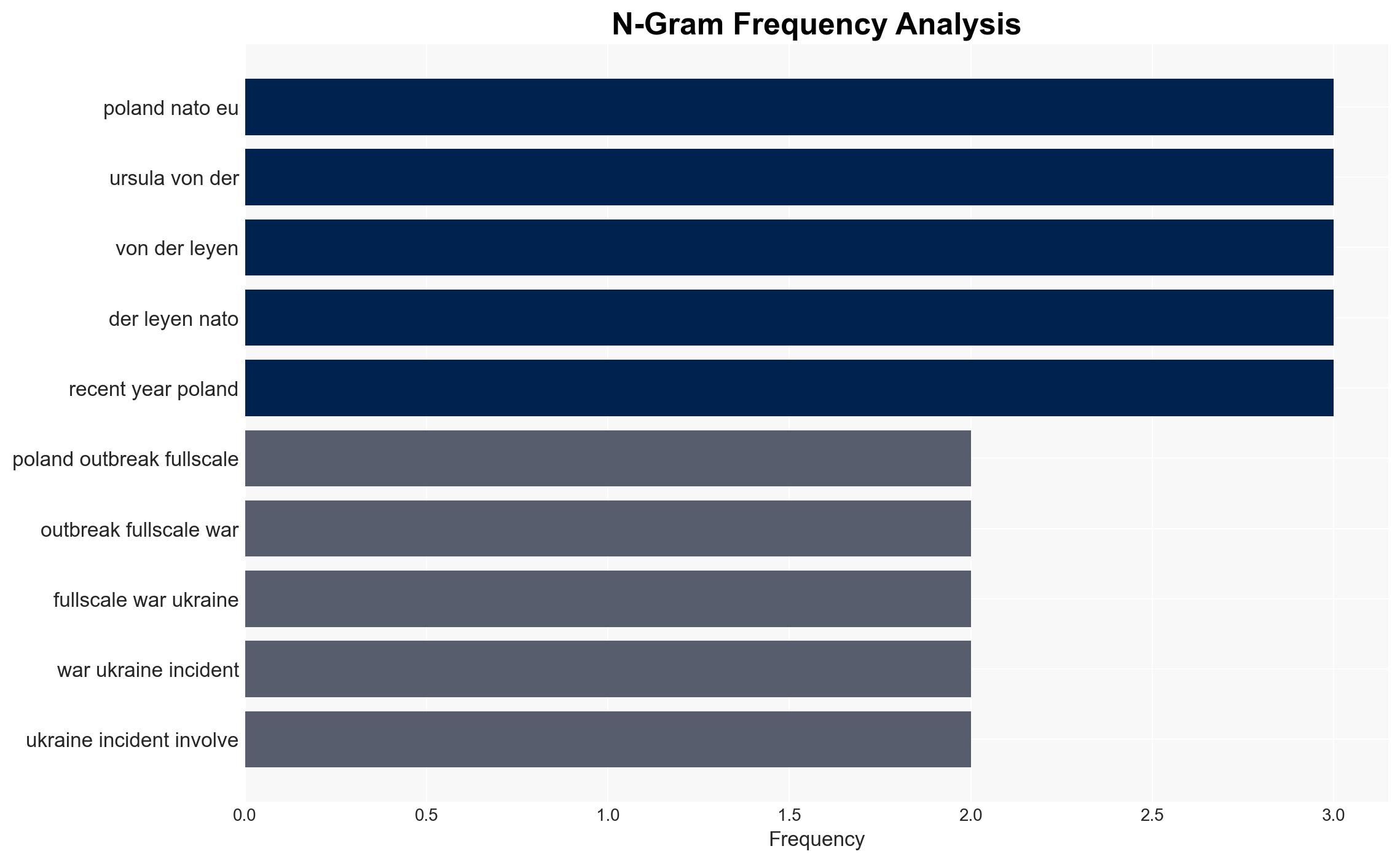Tusk says Russia behind sabotage of railway – RTE
Published on: 2025-11-18
AI-powered OSINT brief from verified open sources. Automated NLP signal extraction with human verification. See our Methodology and Why WorldWideWatchers.
Intelligence Report:
1. BLUF (Bottom Line Up Front)
With a moderate confidence level, the most supported hypothesis is that the sabotage of the railway in Poland was orchestrated by actors with ties to Russian interests, potentially to destabilize Poland and test NATO’s response. Recommended actions include increasing surveillance and intelligence-sharing among NATO allies, enhancing cybersecurity measures, and diplomatic engagement to mitigate tensions.
2. Competing Hypotheses
Hypothesis 1: The sabotage was conducted by individuals with ties to Russian intelligence to destabilize Poland and test NATO’s response capabilities. This is supported by the suspects’ alleged connections to Russian-occupied regions and the geopolitical context of heightened tensions between Russia and NATO.
Hypothesis 2: The sabotage was an isolated incident carried out by individuals with personal motives unrelated to state-sponsored activities. This hypothesis considers the possibility of opportunistic criminal behavior or personal vendettas, though it is less supported by the current geopolitical climate.
3. Key Assumptions and Red Flags
Assumptions: It is assumed that the suspects’ connections to Russian-occupied regions imply state sponsorship. The geopolitical context is assumed to influence individual actions.
Red Flags: The timing of the sabotage coinciding with heightened tensions in the region. The Kremlin’s quick denial and accusations of Russophobia could indicate an attempt to deflect blame.
Deception Indicators: The Kremlin’s narrative may aim to sow discord and confusion among NATO allies.
4. Implications and Strategic Risks
The incident could escalate tensions between NATO and Russia, leading to increased military posturing and potential cyberattacks. Politically, it may fuel anti-Ukrainian sentiment in Poland, affecting domestic and international relations. Economically, disruptions in transport could impact supply chains, particularly military and humanitarian aid to Ukraine.
5. Recommendations and Outlook
- Enhance intelligence-sharing and coordination among NATO allies to monitor and respond to similar threats.
- Strengthen cybersecurity measures to protect critical infrastructure.
- Engage in diplomatic efforts to de-escalate tensions and prevent further incidents.
- Best-case scenario: Increased vigilance and cooperation prevent further incidents, stabilizing the region.
- Worst-case scenario: Escalation leads to direct confrontations or cyberattacks, destabilizing NATO-Russia relations.
- Most-likely scenario: Continued low-level incidents and diplomatic tensions, requiring ongoing monitoring and response.
6. Key Individuals and Entities
Donald Tusk (Poland Prime Minister), Dmitry Peskov (Kremlin Spokesman), Ursula von der Leyen (EU Chief), Mark Rutte (NATO Secretary General), Andriy Sybiga (Ukrainian Foreign Minister).
7. Thematic Tags
Structured Analytic Techniques Applied
- Cognitive Bias Stress Test: Expose and correct potential biases in assessments through red-teaming and structured challenge.
- Bayesian Scenario Modeling: Use probabilistic forecasting for conflict trajectories or escalation likelihood.
- Network Influence Mapping: Map relationships between state and non-state actors for impact estimation.
Explore more:
National Security Threats Briefs ·
Daily Summary ·
Support us





